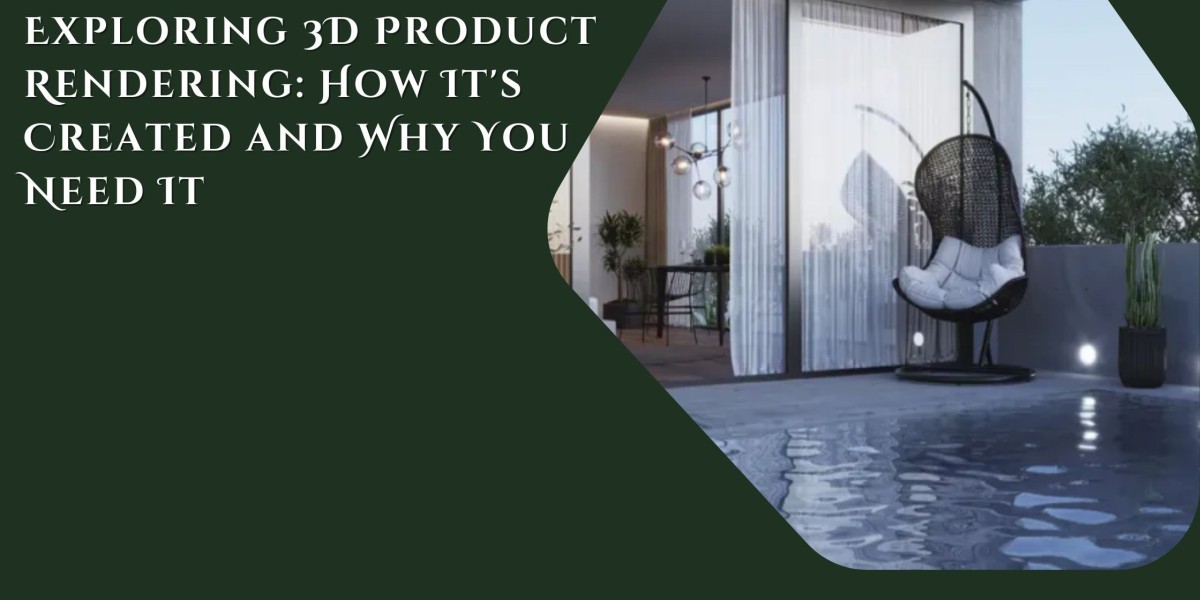In the ever-evolving world of e-commerce and marketing, businesses are constantly seeking innovative ways to present their products in the most appealing and immersive manner. One such revolutionary technique that has gained immense popularity in recent years is 3D product rendering. This technology has redefined the way products are showcased and has become a game-changer for various industries. In this blog, we'll delve into what 3D product rendering is, how it's created, and why 3D product rendering services have become a necessity for businesses.
What Is 3D Product Rendering?
3D product rendering is a process that involves creating highly realistic three-dimensional representations of products. These renderings can be indistinguishable from actual photographs, allowing customers to examine and interact with the product from various angles and perspectives. Unlike traditional photography, 3D product rendering allows for endless customization, making it an ideal solution for presenting products that may not even exist physically yet.
How Is 3D Product Rendering Created?
The creation of a 3D product rendering involves several stages, each contributing to the final photorealistic outcome. Here's a simplified breakdown of the process:
1. Modeling: The process begins with the creation of a 3D model of the product. Skilled 3D artists use computer-aided design (CAD) software to design a digital representation of the product, ensuring it is highly accurate and detailed.
2. Texturing: The 3D model is then textured with the product's surface properties, such as colors, materials, and finishes. Texturing adds a layer of realism to the model.
3. Lighting: Proper lighting is crucial to achieve realism in 3D rendering. Artists meticulously set up virtual lights to mimic real-world lighting conditions, creating shadows and highlights that enhance the overall look.
4. Rendering: This is the step where the 3D model is turned into a lifelike image. A powerful computer uses rendering software to process the model and generate the final image, considering all the details from the previous steps.
5. Post-processing: After rendering, the image may go through post-processing to refine the final result, which can include adjusting colors, contrasts, and adding special effects.
The result is a high-quality 3D product rendering that can be used across various marketing channels, including websites, e-commerce platforms, catalogs, and promotional materials.
Why You Need 3D Product Rendering Service
Increased Sales: 3D product renderings provide potential customers with a more detailed and immersive view of your products. This boosts their confidence in making a purchase, leading to increased sales.
Cost-Effective: Creating physical prototypes or organizing expensive photoshoots can be time-consuming and costly. 3D product rendering offers a more cost-effective alternative.
Customization: 3D rendering allows for easy customization of product images. You can change colors, materials, or configurations effortlessly, catering to different markets and customer preferences.
Competitive Edge: As more businesses adopt 3D product rendering, having high-quality 3D images sets you apart from the competition and signals your commitment to innovation and customer experience.
Flexibility: 3D renderings are not limited by the constraints of physical photography. You can display products in various settings and contexts, tailoring them to your brand and target audience.
In conclusion, 3D product rendering services have become a crucial tool for businesses aiming to thrive in the digital age. They offer unparalleled benefits in terms of visual representation, customization, and cost-efficiency. By investing in 3D product rendering, you can enhance your brand's image, engage your customers more effectively, and stay ahead in the competitive world of e-commerce and marketing. Whether you are in the fashion, furniture, electronics, or any other industry, 3D product rendering is a game-changer that can elevate your marketing strategy to new heights.
 " class="wow_main_float_head_img">
" class="wow_main_float_head_img">







